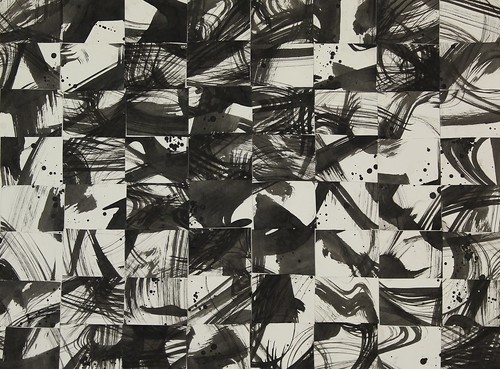If a gene encoded a protein and represented glycosyltransferases, glycosidases, lectins, sulfotransferases or proteins involved in carbohydrate metabolism or transport [5], it was labeled as a glycogene. In this way, we determined fifty nine (,twenty five%) up- and 52 (,23%) down-regulated glycogenes out of 230 and 224 differentially expressed gene sets. Some of the glycogenes that demonstrated 4-fold increase in expression rates integrated SCNN1A, SFRP1 and transmembrane protein 217 (TMEM217). In addition, various glycogenes this kind of as matrix metalloproteinases (MMP1, MMP13, MMP3 and MMP9) and genes belonging to the solute provider household (SLC26A8, SLC2A6, SLC37A2 and SLC46A3) exhibited much more than 4-fold up-regulation as a consequence of MyoGkd. Equally, the glycogenes that showed 4-fold reduce incorporated SCN1A, ASIP and protein wnt-11 (WNT11). The listing of top ten up- and down-regulated genes consisted of at minimum two glycogenes.
To validate the RNA-Seq results, we done genuine-time RTPCR to decide the expression amounts of marker genes (Myf5, MyoD, MyoG, MYL2 and MYH3) included in myogenesis and then when compared their expression with RNA-Seq data in MyoGkd samples. The RT-PCR outcomes have been effectively correlated with the RNA-Seq expression knowledge for the five marker genes investigated (Figure 4A). Especially, RT-PCR examination of Myf5, MyoD, MyoG, MYL2 and MYH3 mRNA ranges exposed fold alterations of .Zosuquidar trihydrochloride seventy two, one.32, .42, .35 and .67, respectively (roughly .2-fold reduce) in MyoGkd relative to MyoGwd cells. These results compliment favorably well with our RNA-Seq information exhibiting fold changes of .8 (Myf5), 2.23 (MyoD), .49 (MyoG), .33 (MYL2) and .49 (MYH3), which also corresponded to a two-fold decline in the expression of these marker genes. As an further confirmation of the expression knowledge, 10 genes had  been randomly selected for RTPCR examination, five of them representing the 10 most-up and down-controlled genes. The outcomes exposed that the fold-change profiles measured by RNA-Seq and RT-PCR have been concordant for all 10 genes. However, RT-PCR examination confirmed statistically considerable expression of only eight out of these extra 10 genes (Figure 4B). Amongst the RNA-Seq data, SAP30, MT2A, anisms of skeletal muscle mass advancement by O-GlcNAc glycosylation [103]. Diverse procedures relevant to the development and routine maintenance of skeletal muscles are characterized by the expression of a broad range of molecules that strongly change biological activities, such as muscle mass development, differentiation and regeneration. fascination in glycoproteins has been attaining remarkable interest in recent a long time nonetheless, there are nevertheless numerous unanswered queries concerning their roles throughout skeletal muscle growth [102]. Equivalent to other eukaryotic cells, the plasma membrane 19940105and ECM of myoblasts are rich in glycoproteins and glycolipids [five]. Inhibition of some ECM proteoglycans (syndecans) has demonstrated to cease the development of myoblast proliferation and fusion, no matter of the expression of MRFs [104], [a hundred and five]. Similarly, interrupting N-glycan synthesis has an effect on myoblast fusion [106]. Glycolipids also engage in crucial roles in mobile differentiation and muscle mass advancement [107], [108].
been randomly selected for RTPCR examination, five of them representing the 10 most-up and down-controlled genes. The outcomes exposed that the fold-change profiles measured by RNA-Seq and RT-PCR have been concordant for all 10 genes. However, RT-PCR examination confirmed statistically considerable expression of only eight out of these extra 10 genes (Figure 4B). Amongst the RNA-Seq data, SAP30, MT2A, anisms of skeletal muscle mass advancement by O-GlcNAc glycosylation [103]. Diverse procedures relevant to the development and routine maintenance of skeletal muscles are characterized by the expression of a broad range of molecules that strongly change biological activities, such as muscle mass development, differentiation and regeneration. fascination in glycoproteins has been attaining remarkable interest in recent a long time nonetheless, there are nevertheless numerous unanswered queries concerning their roles throughout skeletal muscle growth [102]. Equivalent to other eukaryotic cells, the plasma membrane 19940105and ECM of myoblasts are rich in glycoproteins and glycolipids [five]. Inhibition of some ECM proteoglycans (syndecans) has demonstrated to cease the development of myoblast proliferation and fusion, no matter of the expression of MRFs [104], [a hundred and five]. Similarly, interrupting N-glycan synthesis has an effect on myoblast fusion [106]. Glycolipids also engage in crucial roles in mobile differentiation and muscle mass advancement [107], [108].
Genes associated in cell cycle regulation and DNA replication. MyoGkd triggered up-regulation of a huge quantity of genes involved in capabilities related to cell proliferation, this sort of as DNA replication, the cell cycle and mitosis (Desk 3A & Table S3A). Figure 2B confirmed the computational final results exhibiting that CCNA2 expression improved by far more than 10-fold in response to MyoGkd based mostly on real time RT-PCR. Cell cycle related genes in these groups consist of a number of mobile division homologue genes including cell division cycle 45 (CDC45), mobile division cycle 20 (CDC20) and cell division cycle 6 (CDC6), each and every showing much more than a four-fold change.
